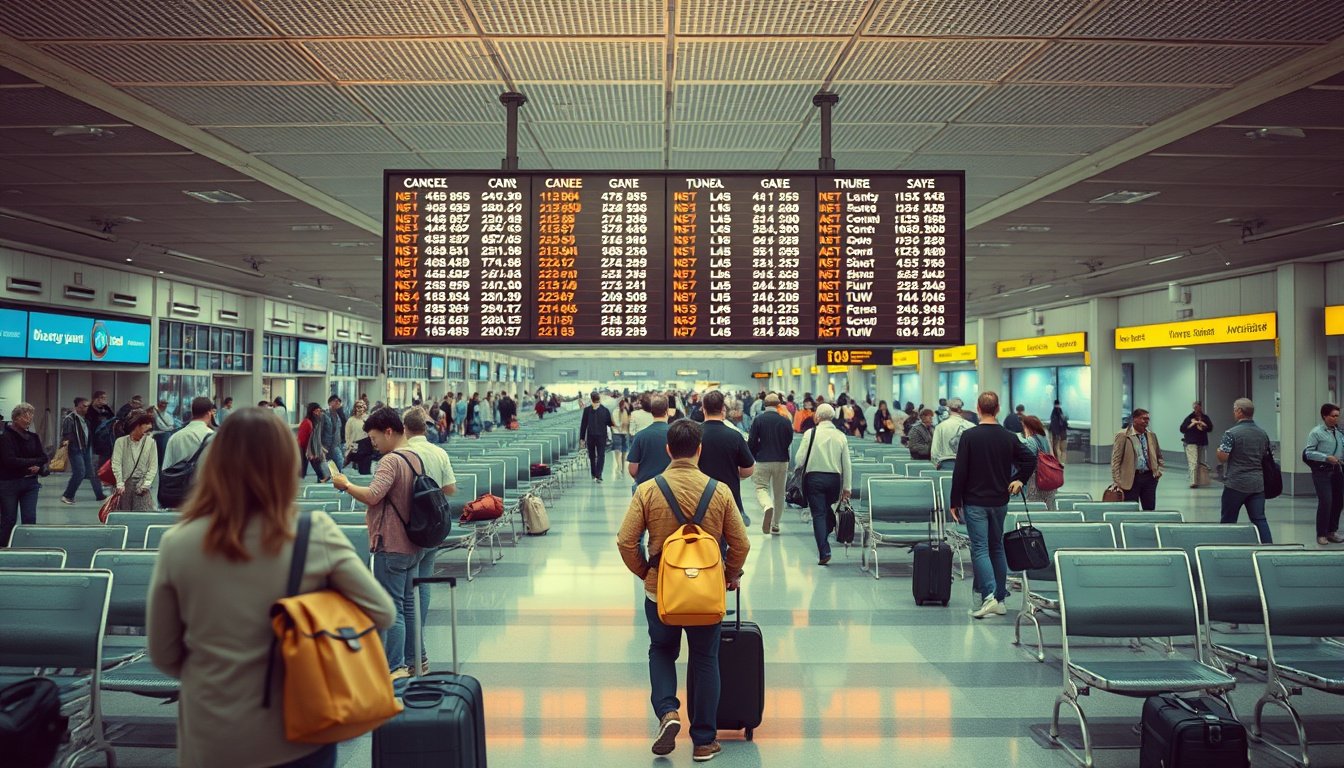In a significant shift, Canadian airlines are slashing flight capacities to U.S. destinations, a move that reflects a dramatic 70% decline in travel interest during the summer months. This downturn stems from various economic factors, including trade tensions and currency fluctuations which have made cross-border travel less attractive for Canadians. According to data from Visual Approach Analytics, leisure hotspots such as Florida are on the frontline of these reductions, with seat availability dropping sharply—Fort Lauderdale’s seats cut by 20% and Orlando by 12%. This trend spells trouble not just for the airlines, like Air Canada and WestJet, which report seat reductions between
7.4% and
25.2%, but also for the broader economy, especially in tourism-centric locales. As Canadians reevaluate their travel options due to a weaker dollar and heightened travel restrictions, the potential ripple effects on local tourism industries, hotels, and businesses spotlight a changing landscape in travel preferences. This article delves into the implications of reduced flight capacities for Canadian travelers and U.S. tourist destinations, as well as the broader economic consequences for airlines and local businesses.

Key Takeaways
- Canadian airlines are reducing U.S. flight seats significantly due to a 70% decline in travel.
- Leisure destinations like Florida are experiencing the most drastic reductions in available flights.
- Economic impacts of these cuts extend beyond airlines, affecting hotels and local businesses in tourist regions.
Impact on Canadian Travelers and Tourist Destinations
Travel is an integral part of life for many Canadians, often serving as both a leisure escape and a business necessity. However, the ongoing trade conflicts and economic uncertainties have dramatically impacted Canadian travelers’ behavior in 2023, leading to significant changes in the aviation market. As Canadian airlines like Air Canada and WestJet reduce flight capacity — with seat decreases of between
7.4% and
25.2% — the effects are palpable, especially for popular U.S. tourist destinations. According to Visual Approach Analytics, leisure hotspots such as Florida are facing the brunt of these cuts, with seat availability dropping by 20% for Fort Lauderdale and 12% for Orlando, while Fort Myers and Palm Beach are experiencing declines of 30% and 43%, respectively. In contrast, routes to major business hubs such as Newark, San Francisco, and Boston remain relatively stable, underscoring a trend where business travel continues to overtake leisure travel. As the weakened Canadian dollar further prompts travelers to reconsider their international plans, many are turning to domestic options or more affordable destinations outside the U.S., which could have long-lasting implications not only for airlines but also for hotels and local businesses reliant on Canadian tourists spending in their regions.
Economic Consequences for Airlines and Local Businesses
The decline in available airline seats to U.S. destinations comes at a time when Canadian businesses and economies heavily reliant on tourism are bracing for the ripple effects. With reductions being concentrated in leisure travel hotspots like Florida, local businesses are poised to face significant challenges. Hotels, restaurants, and entertainment venues that depend on the influx of Canadian visitors are likely to see dwindling revenues as flight capacities shrink. Beyond airlines, the economic repercussions could extend to employment levels within these sectors, potentially leading to layoffs or reduced working hours for staff. Additionally, as Canadians pivot to more affordable domestic vacations, local economies in Canada may experience a temporary uplift, but the loss of high-spending travelers to the U.S. could culminate in broader fiscal strains. This delicate balance between domestic gains and lost international revenue will be essential to monitor for stakeholders within the tourism and business landscape.





